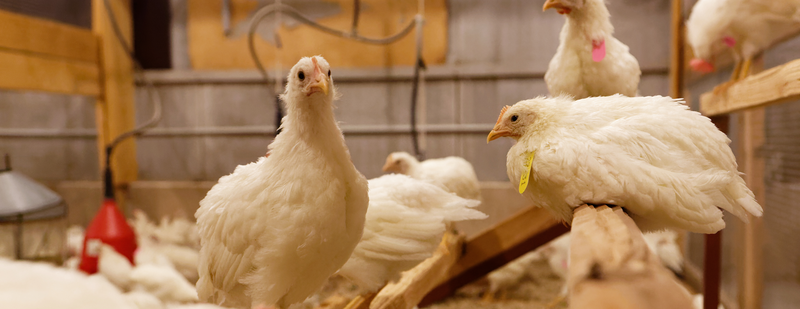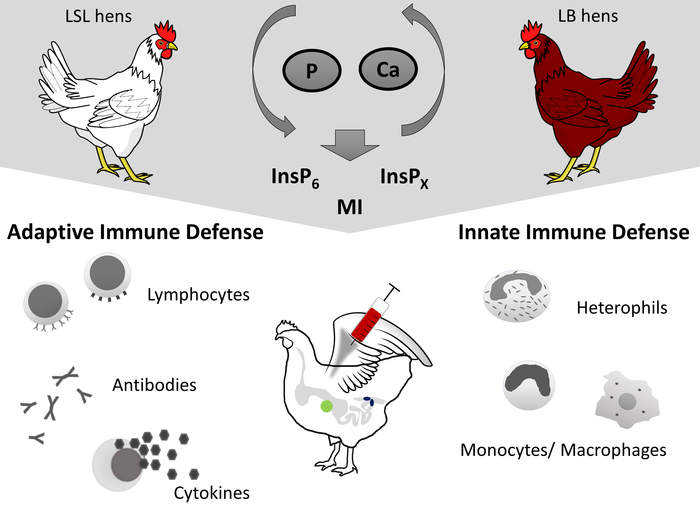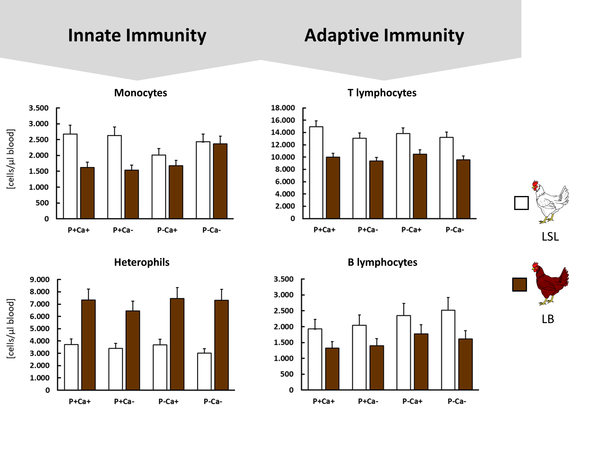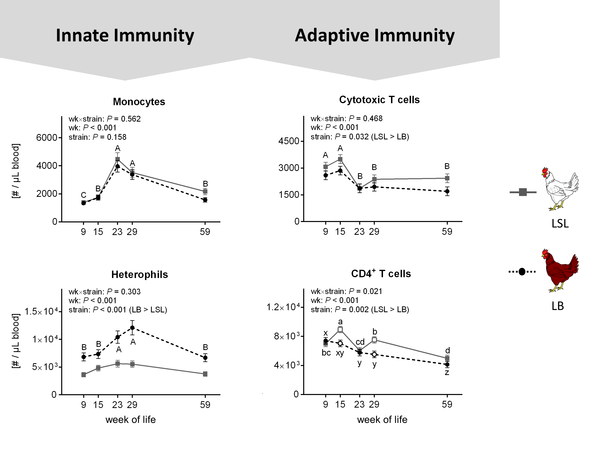Associated Project
Direct and indirect effects of inositol phosphates and myo-inositol on gut-associated and peripheral immunity in hens
Volker Stefanski
Phosphorus (P) and calcium (Ca) are essential nutrients for a functional and well-regulated immune system and are thus of utmost importance for animal health and welfare. The effects of dietary P and Ca supply on the immune system are poorly studied in poultry. Besides the pure availability, also the form in which P is supplied affects immune regulation. Recent evidence indicated a high potential of poultry to hydrolyze phytate with a large variation in P utilization. Laying hens differ from mammals, as the requirements of P and Ca drastically change during lifespan.
The aim of study 1 was to investigate the effects of reduced dietary P and/or reduced dietary Ca on various immune traits in contrasting high yielding Brown (LB) and White (LSL) Leghorn hybrids. Study 2 aimed at analyzing variations in immune traits in association with different stages of production within both hen lines.




